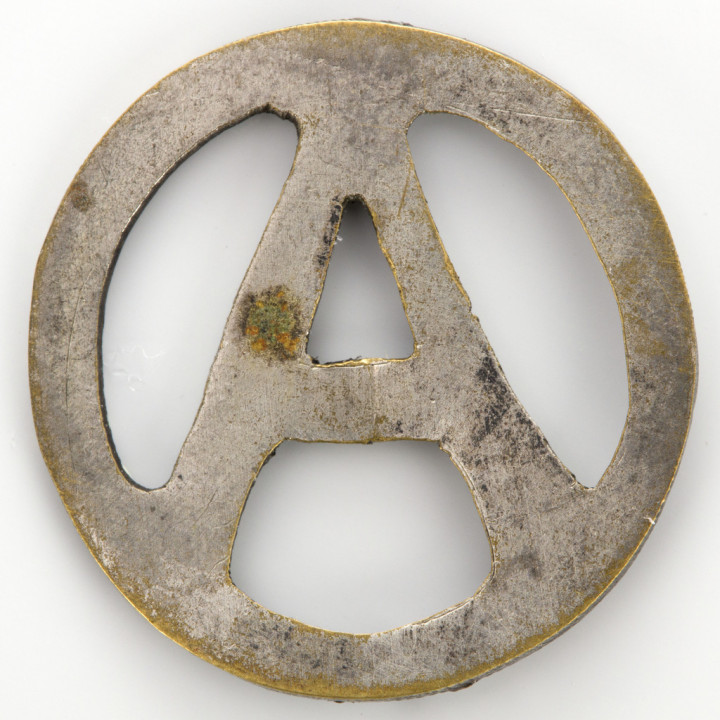
Badge for chauffeurs of the Polish Legions
myminifactory
The badge for the chauffeurs of the Polish Legions is shaped like a flat metal ring, featuring a letter "A" of the same width inside. On the reverse there are two protruding points – probably the remnants of a pin. The presented badge comes from a collection of several dozen exhibits, mainly badges from the period of 1914–1918, related to the Polish Legions, which were purchased by the District Museum in Nowy Sącz in the 1990s.The Polish Legions were established on 3 August 1914 on the initiative of Józef Piłsudski. The First Cadre Company constituted their nucleus, from which the Eastern and Western Polish Legions were created as separate formations of the Austro-Hungarian army. They were later converted into three brigades, led by, among others, Józef Piłsudski, Józef Haller, Bolesław Roja, Kazimierz Sosnkowski and Marian Żegota Januszajtis. The legionnaires fought their best-known battles at Rokitna, Laski, Anielin, Mołotków, Łowczówek, Jastków and Kostiuchnówka (now Ukrainian: Kostyukhnivka). On 20 September 1916, the Legions were transformed into the Polish Auxiliary Corps, and on 10 April 1917, into the Polnische Wehrmacht – the Armed Forces of the Kingdom of Poland. However, most legionnaires refused to swear allegiance to foreign monarchs and were interned in camps in Beniaminów and Szczypiorno. A few months later, the remaining legionnaires broke through and crossed the front line at Rarańcza near Chernivtsi (now Chernivtsi in Ukraine) on the night of 15–16 February 1918, as a protest against the signing of the Brest Peace treaty between the Soviet Russia , Germany, Austria-Hungary and their allies. About 1,600 soldiers lead by Józef Haller merged with the Polish military units formed in the Russian Empire. Those who had not succeeded in doing so were interned by the Austro-Hungarian command in camps in Sygiet Marmaroski (now Sighetu Marmației in Romania) and Huszt (now Khust in Ukraine). the remaining legionnaires broke through and crossed the front line at Rarańcza near Chernivtsi (now Chernivtsi in Ukraine) on the night of 15–16 February 1918, as a protest against the signing of the Brest Peace treaty between the Soviet Russia, Germany, Austria- Hungary and their allies. About 1,600 soldiers lead by Józef Haller merged with the Polish military units formed in the Russian Empire. Those who had not succeeded in doing so were interned by the Austro-Hungarian command in camps in Sygiet Marmaroski (now Sighetu Marmației in Romania) and Huszt (now Khust in Ukraine). the remaining legionnaires broke through and crossed the front line at Rarańcza near Chernivtsi (now Chernivtsi in Ukraine) on the night of 15–16 February 1918, as a protest against the signing of the Brest Peace treaty between the Soviet Russia, Germany, Austria- Hungary and their allies. About 1,600 soldiers lead by Józef Haller merged with the Polish military units formed in the Russian Empire. Those who had not succeeded in doing so were interned by the Austro-Hungarian command in camps in Sygiet Marmaroski (now Sighetu Marmației in Romania) and Huszt (now Khust in Ukraine). 600 soldiers lead by Józef Haller merged with the Polish military units formed in the Russian Empire. Those who had not succeeded in doing so were interned by the Austro-Hungarian command in camps in Sygiet Marmaroski (now Sighetu Marmației in Romania) and Huszt (now Khust in Ukraine). 600 soldiers lead by Józef Haller merged with the Polish military units formed in the Russian Empire. Those who had not succeeded in doing so were interned by the Austro-Hungarian command in camps in Sygiet Marmaroski (now Sighetu Marmației in Romania) and Huszt (now Khust in Ukraine).
With this file you will be able to print Badge for chauffeurs of the Polish Legions with your 3D printer. Click on the button and save the file on your computer to work, edit or customize your design. You can also find more 3D designs for printers on Badge for chauffeurs of the Polish Legions.
